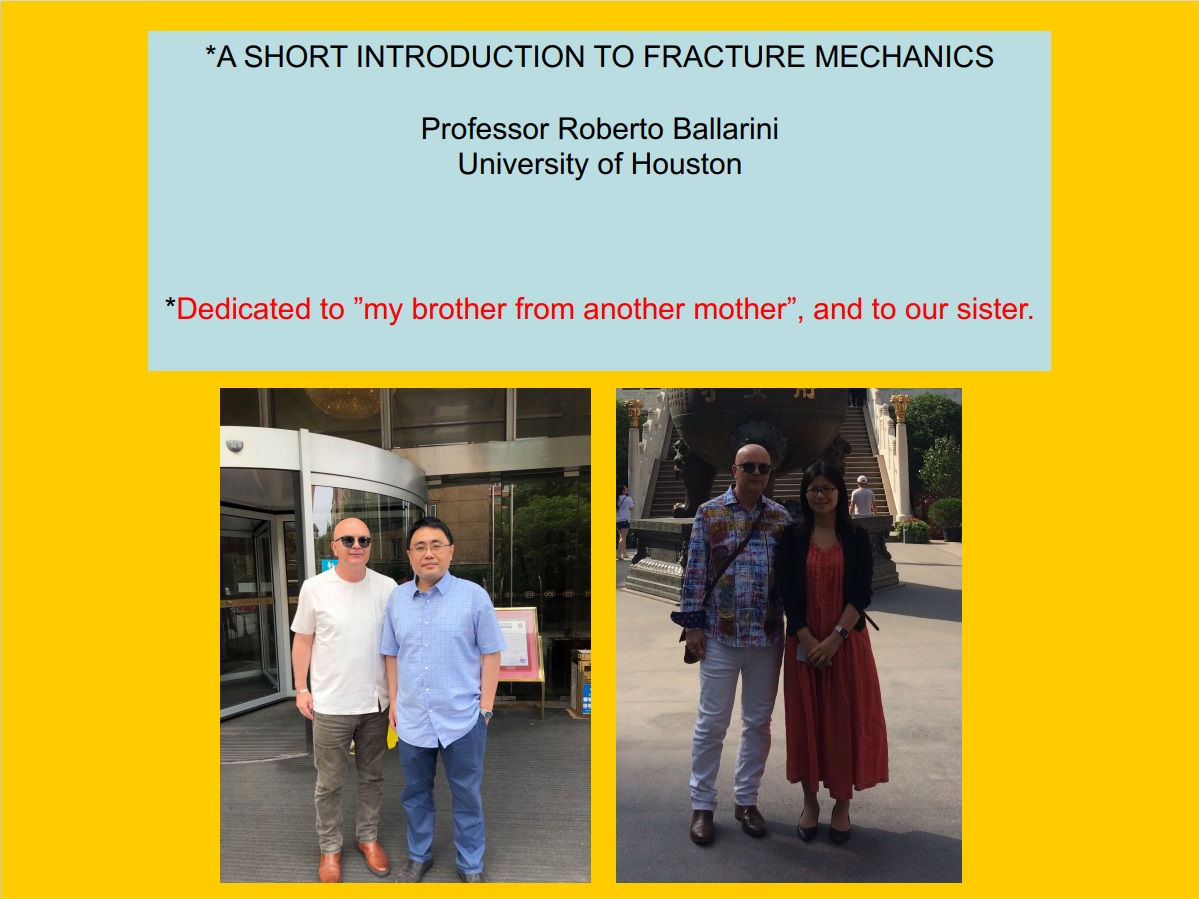A SHORT INTRODUCTION TO FRACTURE MECHANICS
Roberto Ballarini
University of Houston
The three lectures (approximately four hours) will introduce students to the analysis of elastic structures containing pre-existing cracks. The introduction will focus on highlighting the fundamental differences between “strength theories” and “fracture mechanics” theories of failure, and how fracture mechanics can guide the development of improved design procedures for engineered structures, and the creation of new materials with superior mechanical properties.
Introduction: The importance of fracture mechanics to society will be demonstrated through applications taken from the fields of civil engineering, mechanical engineering, aeronautical engineering, microelectromechanical systems, electronic packaging, bioinspired design, and medicine.
Strength versus Fracture Mechanics Approaches: Classical strength (plasticity) approaches to determining the load-carrying capacity of structures will be reviewed. Emphasis will be placed on the flaw-insensitivity that is inherent to these approaches, and how their range of validity is severely limited. Using the stress-intensity factor approach, which relies on “small-scale-yielding” arguments, it will be shown that the nominal failure stress associated with linear elastic fracture mechanics depends on the “brittleness”, defined as the ratio of a characteristic dimension of the cracked structure and an inherent material length scale. The strength and fracture mechanics approaches will be combined to derive bounds on the nominal strength of a cracked structure.
Crack propagation under mixed-mode loading: To provide the theoretical basis for the two applications of fracture mechanics to design, the “local” symmetry criteria for determining the path taken by a crack in an ideally brittle material subjected to mixed-mode loading will be summarized.
Two illustrative examples for which strength theory-based design has been replaced by fracture mechanics-based design: Load-carrying capacity of steel anchor bolts embedded in concrete. Design of high-speed gears in helicopter engines.
About the speaker
Dr. Roberto Ballarini is Thomas and Laura Hsu Professor and Chair of the Civil and Environmental Department at the University of Houston. His multidisciplinary research focuses on the development and application of theoretical, computational and experimental techniques to characterize the response of materials and structures to mechanical, thermal, and environmental loads. Ballarini is particularly interested in formulating analytical/computational models and innovative experiments for characterizing fatigue and fracture. Ballarini’s research has been applied to problems arising in civil/mechanical/aeronautical/aerospace/biomedical engineering, materials science, microelectromechanical systems, and nanotechnology. He has published more than 120 papers in refereed journals, including Science and Nature, and several of his research projects have been featured in the popular press, including the New York Times Science Times, American Scientist, Business Week, Financial Times, and Geo. Ballarini is Past-President of the ASCE Engineering Mechanics Institute; he currently serves as Editor-in-Chief of ASCE Journal of Engineering Mechanics; and he is the recipient of the 2019 ASCE Raymond D. Mindlin Medal. Professor Ballarini is recognized as an extraordinary teacher and mentor to students who have gone on to highly successful careers in engineering, medicine, and business.

|